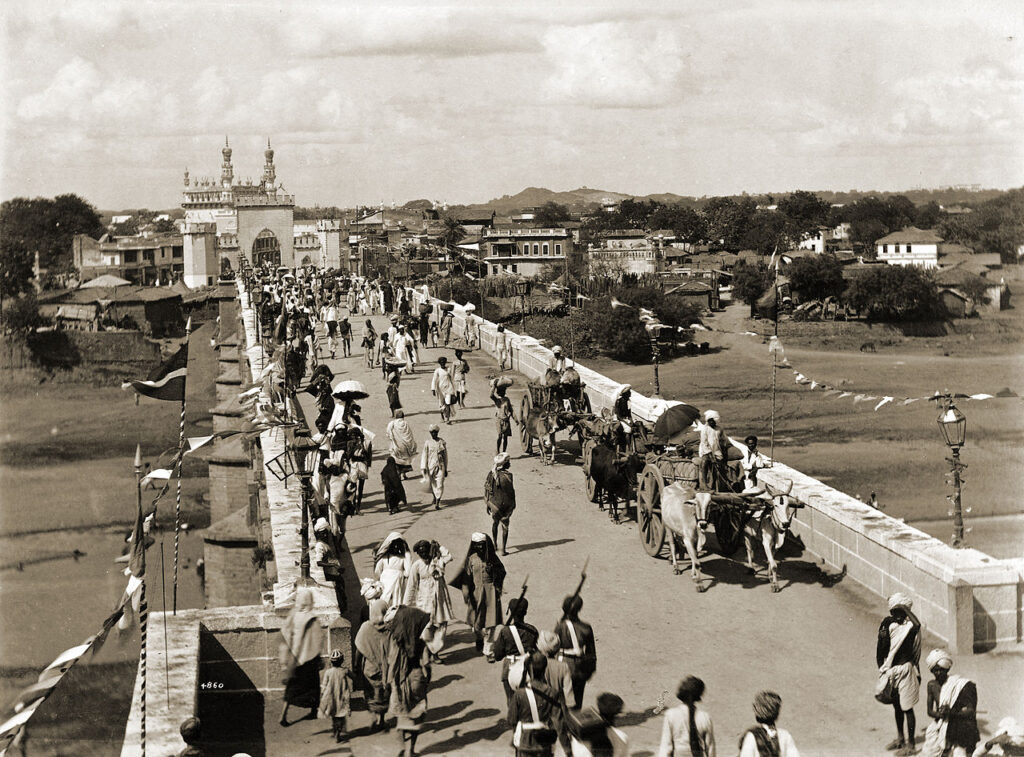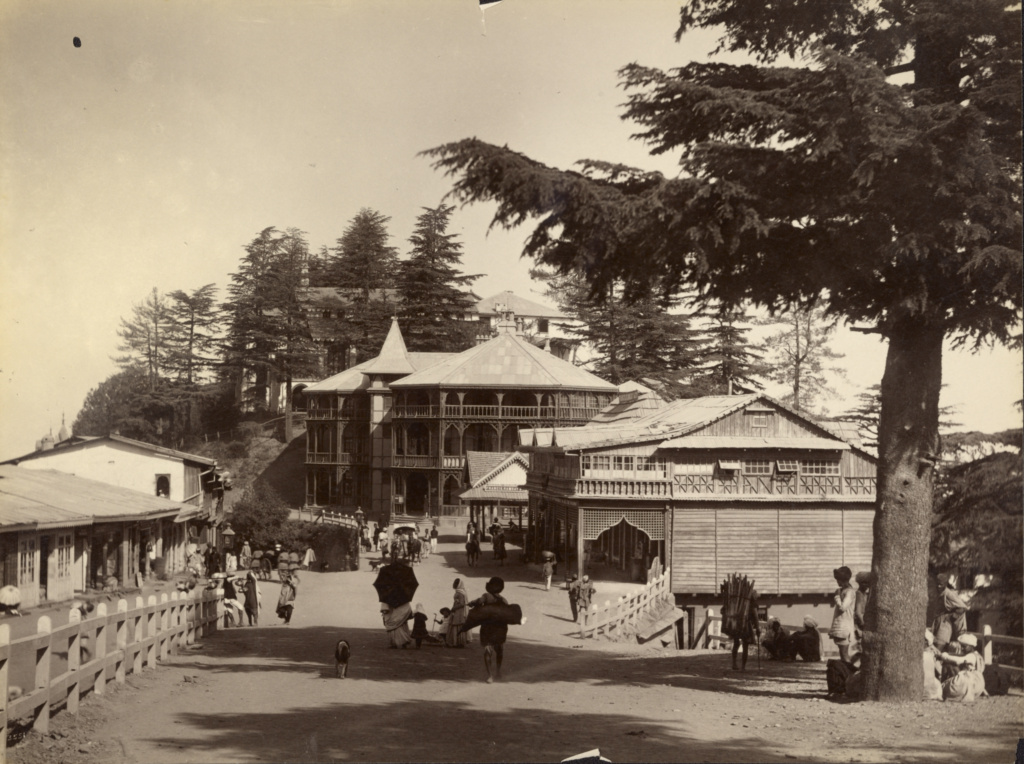In 1826, through his window, Joseph Nicéphore Niépce in France captured the world’s first photograph known to survive- View from the Window at Le Gras. Twelve years later, the world received its first photograph with people in it when Louis Daguerre captured Boulevard du Temple. Two decades after Niépce’s photograph, New York’s oldest surviving photograph- a picture of Manhattan’s Upper West Side, was captured in 1848. These three photographs (three firsts in their own account) had one thing in common.

Whether it was the street in France or the borough in New York- Architecture was their muse.
While one could notice the spires in “View from the Window”, Daguerre’s capture of Boulevard du Temple (co-incidentally, clicked from a window) gave an understanding of the street before the square- Place de la République was built. During the early years of photography, every picture would follow a laborious and time-consuming process- it would take minutes, sometimes hours (it took eight hours to capture View from the Window at Le Gras!) to capture an image. The static form of architecture, therefore, found its way into the earliest photographs known to humankind.

While these were some of the earliest examples of photography in the World, View from the Window and Boulevard du Temple could have easily found their way into American Architect Henry Hobson Richardson’s library of photographs- a collection of photographs from different parts of the world, he would use as references for form, details and to understand architecture. Today, social media and Pinterest have taken over the physical library of Richardson, as architects and enthusiasts of the built habitat continue relying on architectural photography to understand form, space and architecture.
The early photographs focussed on capturing instead of the subject. But, it was William Henry Fox Talbot who is believed to be one of the first to practice photography dedicated to the built. Considered a Pioneer in Photography himself, England-based Talbot’s 1835 photograph of the latticed window of his ancestral property- Lacock Abbey, is believed to be the oldest existing camera negative. In his collection of works that followed over the years, one could as easily spot an architectural element, such as a door or a window, as giant buildings.

As photographers and scientists in the West continued to advance in photography, capturing the built landscape as they did, then-colonial India started documenting its Architecture through photographs. Until then, the East India Company would rely on drawings, artistic impressions and prints to document India’s architecture. With the advent of photography- professional photographs became the preferred mode of documentation. 1845- Ten years after Talbot’s photograph of the lattice window, James Fergusson, an architect and historian, began studying the country’s monuments. His efforts, comprising photo documentation, contributed to prompting the British Government to establish the Archaeological Survey of India in 1861.
The 1860s also observed an increased interest in commercial photography- wherein photographs of architecture that would appeal to the taste of the Europeans would be used to attract tourists. As the interest in Architectural Photography continued to grow, Fergusson, who published his first thorough study in 1876, was quoted as, “There are now very few… buildings in India—of any importance at least—which have not been photographed with more or less completeness.”
A contemporary of English-born Fergusson was India’s native- Raja Lala Deen Dayal, a former draughtsman and one of the first Indians to take up professional photography. Eventually commissioned to capture temples and palaces of India, Raja Deen Dayal (as he was more widely known) took up photography while working in the Department of Works Secretariat Office, Indore.


The early years of Architectural Photography saw the subject split into categories- elevation, the building’s facade, and perspective- the translation of the three-dimensional into two-dimension.
In the early to mid-twentieth century, photographs started focussing on modernism and modern architecture. The century of South Asia’s Independence also saw the newly independent countries rely on their country’s upcoming architecture to attest their mark. While India saw a deluge of architectural photographers capturing modernism, the tropical country Sri Lanka was leading the world in an amalgam of vernacular and modernism in the form of tropical modernism.
Over the decades, with advancements in Photography, Architectural Photography became more expressive of the person behind the lens. From the perspective of the angle to the play of shadow and light, a photograph, and to a certain extent, its impression on the masses, started to depend on the technique and finesse of the photographer.
What started as a medium to document heritage expanded into being a source of marketing for tourism, client engagement and activism. Architectural Photography made it easier to critique, commend or form an opinion of space, otherwise known for its tangible experience, without physically experiencing it.
Documentation through Architectural Photography, since the invention of photography itself, has captured an evolving region- from capturing Indigenous Architecture during the days of Colonialism to the barracks that came up during the World Wars, the swarm of refugee camps the Partitions introduced to the rehabilitation infrastructure post earthquakes, the inauguration of the structures such as the Hall of Nations to their demolition, photography captured not just the evolution of architecture, but the change in spaces brought on by historical events in the South Asian region.
Just like its subject- Architecture, which observed changing trends and patterns, photography also evolved- whether it is the shift from photographs printed on a metal plate to negative to printing paper or from aerial photographs taken on hot air balloons to drone photography, or from print to social media. From Mies Van der Rohe superimposing glass structures on photographs of the context to the incorporation of Photoshop and now Artificial Intelligence in Architecture- the story of Architectural Photography starts from the invention of photography itself.
Today, with the widespread accessibility of social media and the blink-and-miss attention span of the audience- a lot rides on a photographer’s creation of the photograph. While a visual medium, we believe architectural photography can heighten the other senses as well- whether it is an abandoned space projecting eerie silence or a heavily ornamented detail instigating tactility, photography has the power to engage us with a space in its two-dimensional form.


And the Spatial Experience of space is all that architecture is about!
Maverick Shutterbugs 2.0 is a compilation of this experiential quality of space and the visual narratives an architectural photographer manages to weave. Our form is live at Maverick Shutterbugs 2.0, and we encourage all professional architectural photographers engaged with South Asia’s built habitat to participate.
Featured Image: Departure of English Mail from Post Office, Simla by Raja Deen Dayal (via: Getty Museum Collection)








